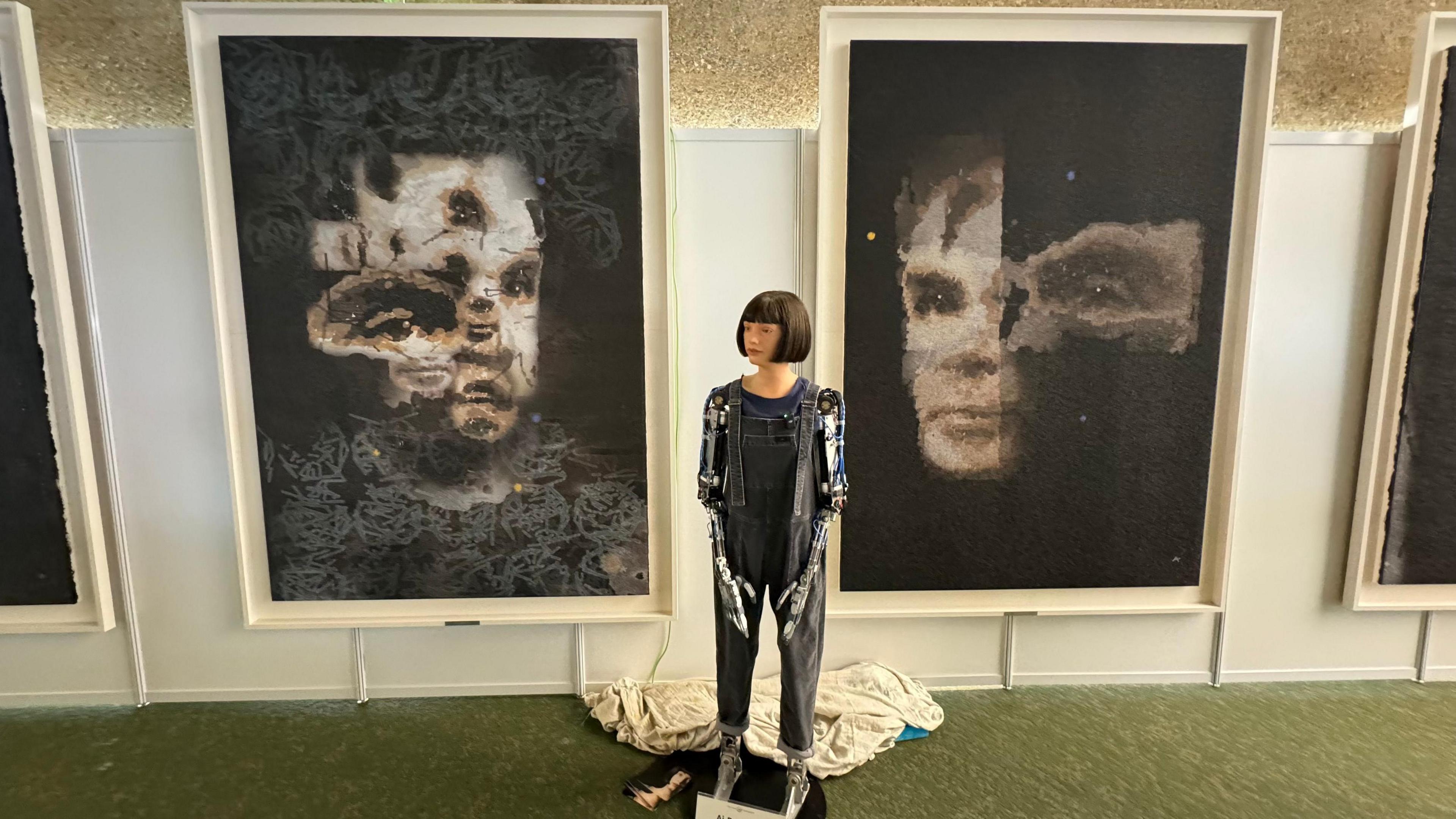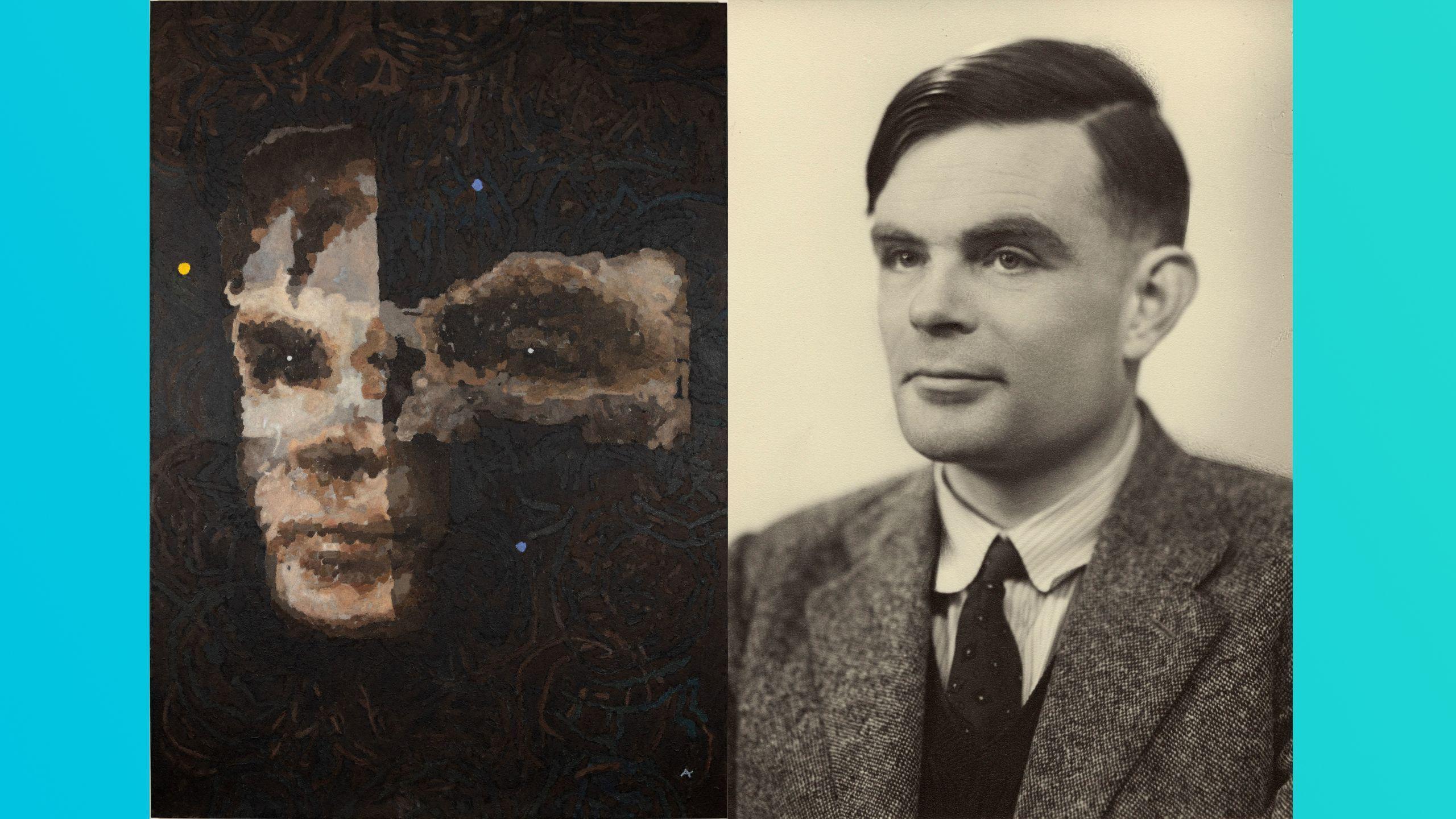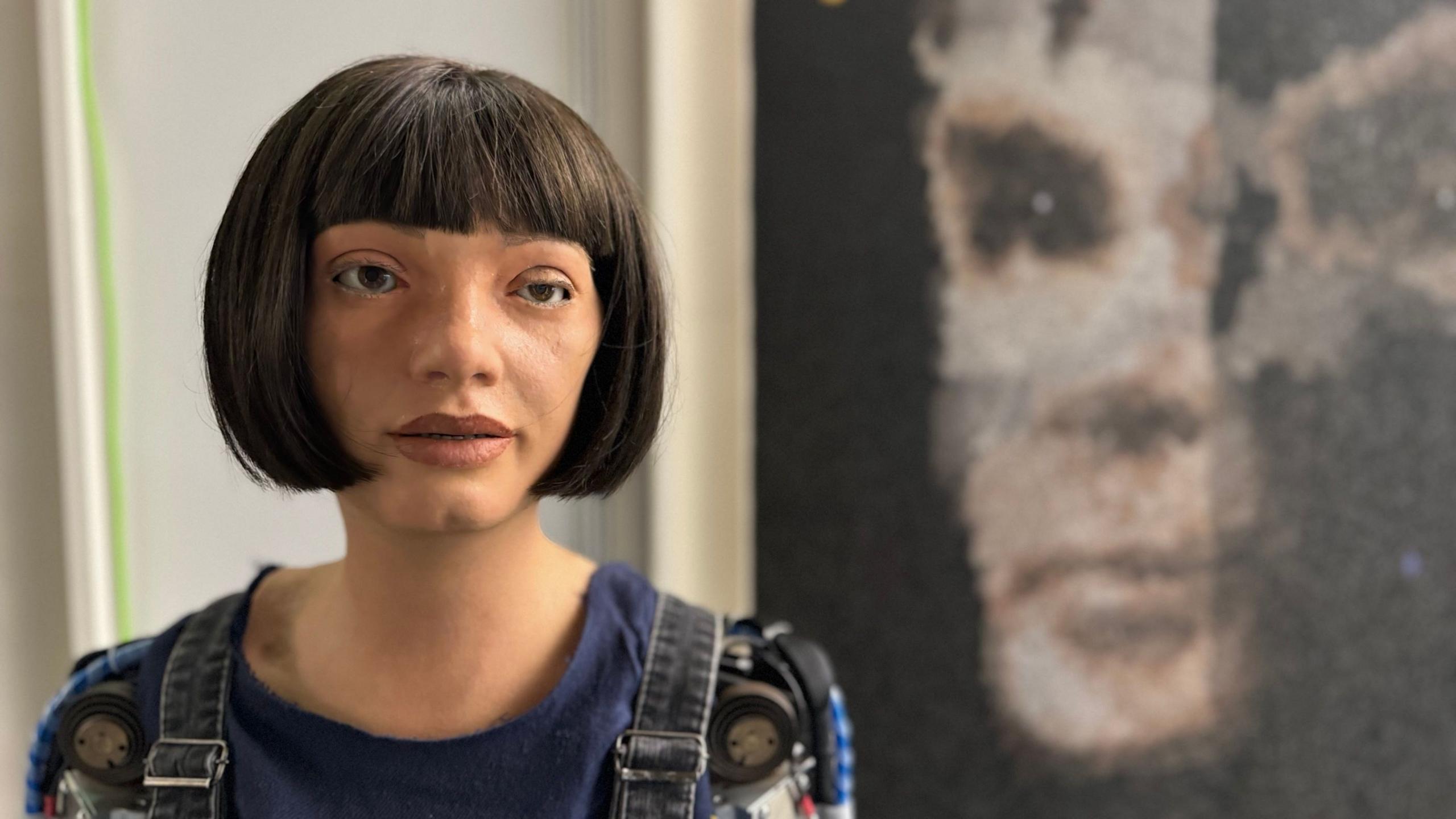Painting by an AI robot sells for more than $1 million

Ai-Da is named after Ada Lovelace, who is considered to be the first computer programmer
- Published
A painting has become the first piece of art by a humanoid robot to be sold at a major auction house - and it sold for hundred of thousands of pounds.
High-profile auctions, where people bid huge sums of money for artwork, are usually reserved for well known or respected artists.
This painting, which is of legendary 20th century mathematician and war-time code-breaker Alan Turing, was sold for $1,084,800 (£836,667).
The piece was only expected to fetch around £100,000 to £150,000.
Ai-Da Robot is made to look like a woman, but has cameras in its eyes and uses artificial intelligence to create drawings, painting, and sculptures.
What is artificial intelligence?
- Published2 November 2023
Is using AI to help with school work cheating?
- Published1 March 2023
Is artificial intelligence a good idea?
- Published9 August 2019

On the left you see Ai Da's painting, named 'AI God'. The righthand image is a portrait photograph of Alan Turing in 1951.
How did Ai-Da actually create the artwork?

Ai-Da has cameras in her eyes so she can use her AI programming to decide what she wants her artworks to look like
Ai-Da was programmed with a series of algorithms and then created 15 portraits of Alan Turing.
It then chose three of them, alongside a painting she had also made of his bombe machine, (a device he helped create which de-coded messages during World War II), and these were photographed and the images uploaded to a computer.
The robot uses an advanced AI language model to speak and decided how "she" wanted the final paintings to look.
It was then printed on to a huge 2.28m high canvas, with Ai-Da making marks and texture on the final canvas to complete the piece.
A few extra bits of texture were added by studio assistants as Ai-Da's robotic arms can't quite reach the edges of the canvas.
Ai-Da Robot said: "The key value of my work is its capacity to serve as a catalyst for dialogue about emerging technologies."
